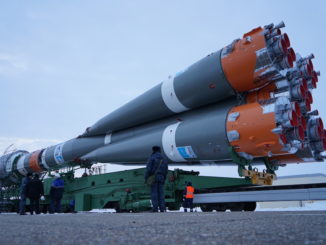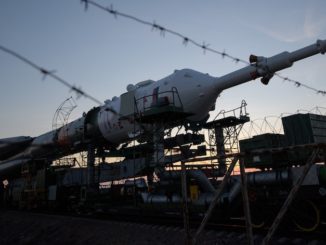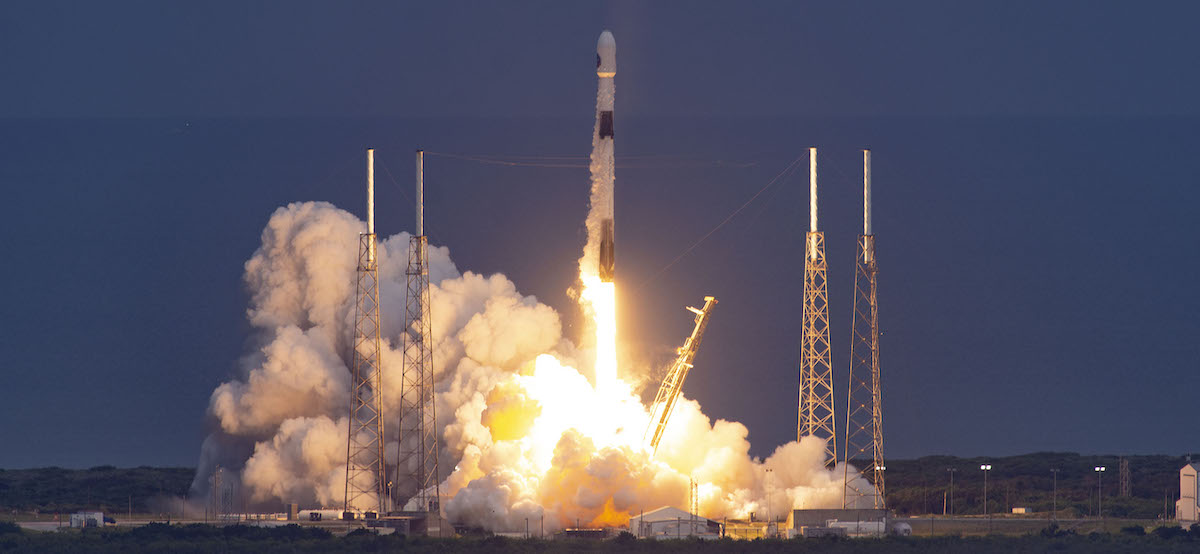
Vaulting away from Cape Canaveral on an unusual southerly trajectory, a Falcon 9 rocket dodged stormy weather and successfully placed an Argentine radar observation satellite into an orbit over Earth’s poles Sunday on SpaceX’s 100th launch.
Scattered thunderstorms across Central Florida threatened to prevent the launch from happening Sunday, but weather criteria were acceptable as the countdown ticked through the final minutes before liftoff of the 229-foot-tall (70-meter) Falcon 9 rocket at 7:18:56 p.m. EDT (2318:56 GMT).
SpaceX aimed to launch two Falcon 9 rockets from Cape Canaveral Sunday — a feat unmatched since 1966 — but preparations for the other flight fell behind schedule due to poor weather. That rocket is loaded with 60 Starlink broadband satellites, and is now scheduled to take off at 9:29 a.m. EDT (1329 GMT) Tuesday from pad 39A at the Kennedy Space Center.
Nine Merlin engines flashed to life seconds before launch, and clamps opened to allow the 1.2-million-pound rocket and Argentina’s SAOCOM 1B radar remote sensing satellite to climb away from pad 40 at Cape Canaveral Air Force Station.
Instead of launching toward the northeast or east, the Falcon 9 darted through a cloudy sky and arced to the south-southeast from Florida’s Space Coast, then made a right turn to fly along the east coast of Florida over Fort Lauderdale and Miami on the way to a polar orbit.
The launch Sunday was the first from Cape Canaveral to fly on a southerly track since 1969. Since then, most U.S. launches into polar orbit have departed from Vandenberg Air Force Base in California, which has an open range over the Pacific Ocean that does not require rockets to make an in-flight turn, or “dogleg” maneuver, to avoid flying over land.
The nine Merlin engines on the Falcon 9’s first stage shut down about two-and-a-half minutes after launch, then the booster — reused from three previous missions — separated and flipped around to begin thrusting back toward Cape Canaveral.
After firing engines to slow down, the booster extended landing legs and returned to Landing Zone 1 on Cape Canaveral Air Force Station about eight minutes into the mission, touching down as a powerful sonic boom rippled through an atmosphere thick with humidity.
It was the 18th time SpaceX has landed a Falcon 9 booster at Cape Canaveral since 2015, and the 59th successful recovery of a Falcon 9 first stage overall, including landings on SpaceX’s ocean-going drone ships.
The successful return of the Falcon 9 first stage marks the 18th landing of a SpaceX-built reusable booster to Cape Canaveral.
LIVE COVERAGE: https://t.co/VunACRNd09 pic.twitter.com/l2SNSeL97m
— Spaceflight Now (@SpaceflightNow) August 30, 2020
During the booster’s descent, a single Merlin engine on the Falcon 9’s upper stage injected the 6,724-pound (3,050-kilogram) SAOCOM 1B satellite into orbit roughly 380 miles (610 kilometers) above Earth.
The Argentine-built satellite, equipped with a sophisticated radar imaging instrument, separated from the Falcon 9’s upper stage about 14 minutes into the mission. Two smaller rideshare payloads — named GNOMES 1 and Tyvak 0172 — deployed from the Falcon 9 about 45 minutes later.
The GNOMES 1 microsatellite is the first of a planned fleet of around 20 small spacecraft being developed by a Colorado-based company PlanetiQ to collect radio occultation data by measuring the effects of the atmosphere on signals broadcast by GPS, Glonass, Galileo and Beidou navigation satellites. The information can yield data on atmospheric conditions that are useful in weather forecasts.
Tyvak 0172 is a small spacecraft built by Tyvak Nano-Satellite Systems. Details about its mission have not been disclosed by SpaceX or Tyvak.
SpaceX launches first polar orbit mission from Cape Canaveral since 1969
The rideshare payload separations wrapped up the first launch into polar orbit from Florida’s Space Coast in more than 50 years. Before Sunday, the last polar orbit launch from Cape Canaveral was on Feb. 26, 1969, when a Delta rocket launched the ESSA 9 weather satellite.
After skirting South Florida, the Falcon 9 rocket flew over Cuba and Central America, then soared over the Pacific Ocean west of South America. The bend in the rocket’s track a few minutes after launch ensured the instantaneous impact point — where debris might fall of the launcher failed — did not cross over Florida after departing Cape Canaveral.
By the time the rocket reached Cuba, it was flying too high to be a safety concern, according to officials from the U.S. Space Force’s 45th Space Wing and the Federal Aviation Administration, which are charged with ensuring public safety during rocket launches from Cape Canaveral.
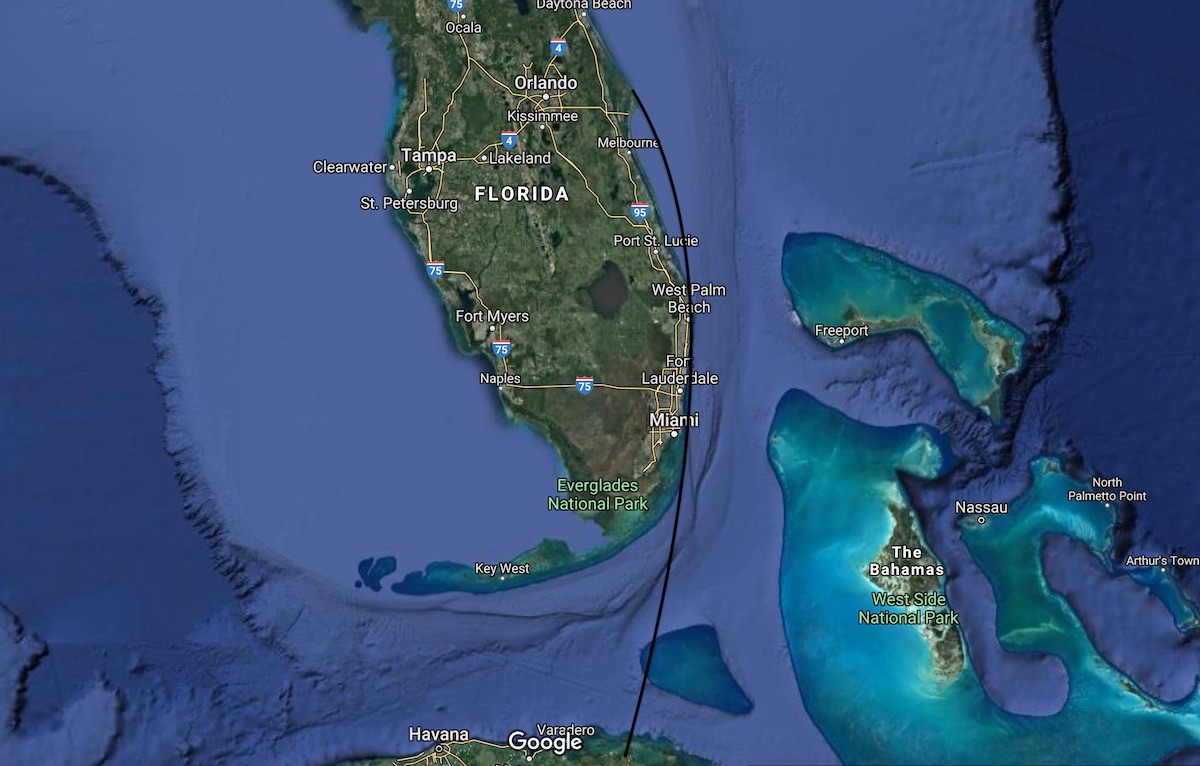
Range safety officials studied whether the the southerly launch trajectory from Florida might be resurrected after wildfires at Vandenberg Air Force Base — the primary U.S. polar orbit launch site in California — threatened launch and payload processing facilities in 2016.
It turned out SpaceX’s ability to return first stage boosters to controlled landings — rather than having them plummet unguided back to Earth downrange — and the Falcon 9’s use of autonomous flight safety system made the polar launch trajectory from Cape Canaveral feasible.
“What we came up with after we analyzed is SpaceX should be able to do it because of two things,” said Wayne Monteith, associate administrator of the FAA’s office of commercial space transportation. “No. 1, booster flyback, and No. 2, even more important, is autonomous flight safety because going south, the way the architecture of the command destruct systems are set up terrestrially, you’d be looking right up the plume, and you get signal attenuation, and you may not be able to … send command destruct.
“So with autonomous flight safety and booster flyback, we were able to provide for them what appeared to be a notional safe corridor from a safety perspective,” said Monteith, a former commander of the 45th Space Wing.
The State Department is charged with notifying other countries of a rocket flight over their territories. Those notifications were made for the SAOCOM 1B mission, according to Brig. Gen. Doug Schiess, the current commander of the 45th Space Wing.
A satellite launching from Cape Canaveral targeting a polar orbit in 1960 suffered an in-flight failure and spread debris over Cuba, reportedly killing a cow and prompting protests at the U.S. Embassy in Havana.
SpaceX elected to use the southerly polar launch trajectory on the SAOCOM 1B mission to allow the company to reduce staffing levels at Vandenberg during a period with few launches there, Gwynne Shotwell, company’s president and chief operating officer, told reporters last year.
Falcon 9’s launch and first stage landing in my backyard. Well done @SpaceX pic.twitter.com/SzkQKowwBh
— Dr. Buzz Aldrin (@TheRealBuzz) August 30, 2020
The company plans another launch from Vandenberg in November with the Sentinel 6 Michael Freilich oceanography satellite, a joint project between NASA, NOAA, the European Space Agency, and other European institutions.
Another Falcon 9 launch into a polar sun-synchronous orbit is planned from Cape Canaveral in December on a rideshare mission with numerous small satellites.
Scott Higginbotham, a mission manager from NASA’s Launch Services Program, confirmed the mission — which SpaceX calls Transporter-1 — is slated to launch from Cape Canaveral. NASA has booked a small payload to fly on the Falcon 9 rideshare launch.
SAOCOM 1B joins twin in orbit
Developed by Argentina’s space agency, CONAE, and the Argentine aerospace contractor INVAP, the SAOCOM 1B satellite joins a twin radar imaging spacecraft that launched on a previous Falcon 9 flight in October 2018.
The SAOCOM 1B spacecraft will scan the Earth with an L-band steerable synthetic aperture radar, enabling all-weather imagery of the planet day and night. Radar imagers can see through clouds and are effective 24 hours a day, but optical cameras are hindered by clouds and darkness.
Argentina’s 6,724-pound (3,050-kilogram) SAOCOM 1B radar remote sensing spacecraft has deployed from the Falcon 9’s upper stage after reaching a roughly 380-mile-high (610-kilometer) orbit.
Two rideshare payloads will deploy about an hour after launch. https://t.co/VunACRNd09 pic.twitter.com/dC1il1dNP7
— Spaceflight Now (@SpaceflightNow) August 30, 2020
Among other objectives, the SAOCOM satellites are designed to measure soil moisture and collect data for users in Argentina’s agricultural and forestry sectors.
The SAOCOM 1B satellite weighs around 6,724 pounds (3,050 kilograms) and is identical to SAOCOM 1A, according to Raúl Kulichevsky, executive and technical director of CONAE.
Kulichevsky said the Falcon 9 will place SAOCOM 1B into a 385-mile-high (620-kilometer) orbit, where it will double the observing capacity of SAOCOM 1A. The SAOCOM satellites work in tandem with Italy’s COSMO-SkyMed satellites to survey the same regions with L-band and X-band radar imagers.
“One of the main targets of the SAOCOM satellites is to provide information for the agriculture sector because one of the things we develop is soil moisture maps, not only of the surface, but taking advantage of the L-band capabilities, we can measure the soil moisture 1 meter the surface of the land,” Kulichevsky said. “This is very important information.”
The entire SAOCOM project cost about $600 million, including two satellites, two launches, a new ground tracking station, and industrial improvements, Kulichevsky told Spaceflight Now in an interview.
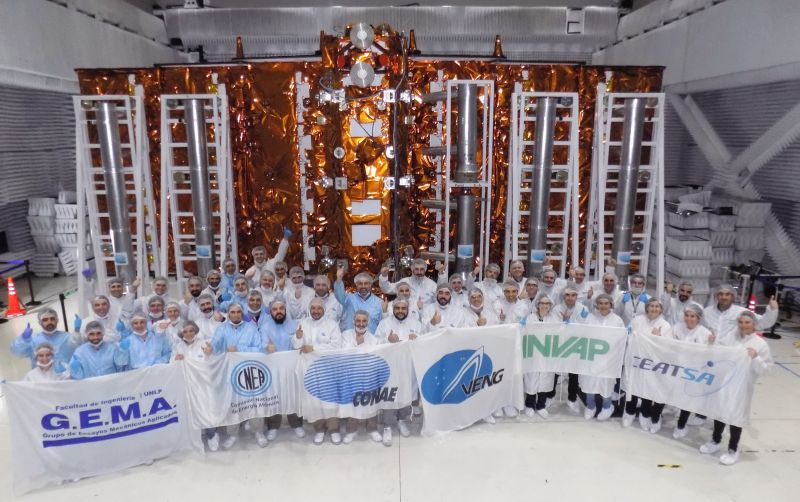
SAOCOM 1B was previously scheduled for launch in March, but Argentine officials called off the mission due to concerns about the coronavirus pandemic. Engineers placed SAOCOM 1B in storage at Cape Canaveral until early July, when engineers returned to Florida from Argentina to finish readying the spacecraft for liftoff.
The launch of SAOCOM 1B was again delayed from late July because the range was not available for the launch, according to SAOCOM 1B team members. Sources said the delay was caused by range safety and overflight concerns with the classified payload mounted on top of United Launch Alliance’s Delta 4-Heavy rocket at a neighboring launch pad.
The southerly trajectory required for the SAOCOM 1B mission took the Falcon 9 rocket on a track closer to the Delta 4 pad than for a typical launch toward the east.
The overflight range safety concerns associated with the Delta 4’s NRO payload appeared to suddenly evaporate without explanation Saturday, when range safety officials agreed to permit the SAOCOM 1B launch to go ahead.
Email the author.
Follow Stephen Clark on Twitter: @StephenClark1.


